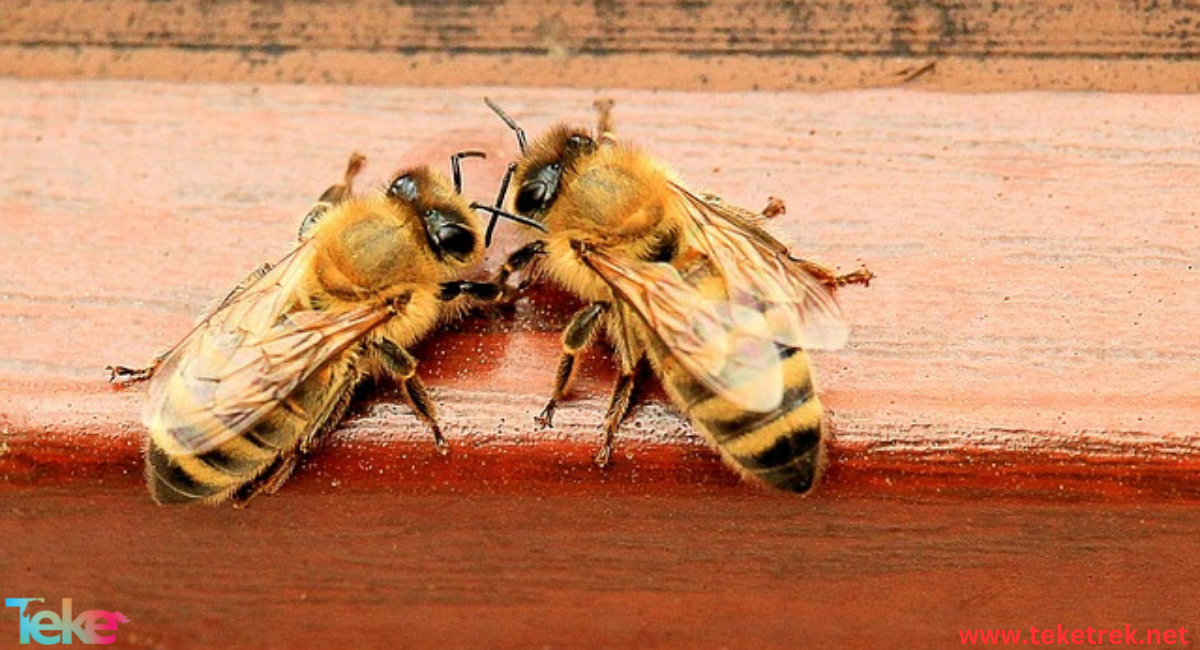Yemeni beekeeping and honey production are among the crafts that Yemen has known since ancient times. As a result, the history of Yemeni beekeepers’ dates back to the 10th century BC, according to studies issued by Hadhramaut University.
The history of Yemeni beekeepers was linked to the development of the economic life of the state of Hadhramaut at that time, and studies also show that the honey trade comes in fourth place among the economies of Yemen in the modern era.
If you are interested in knowing the properties and advantages of bees, Yemeni honey, and some other topics, this article on TekeTrek Website will be useful for you to understand all matters related to Yemeni bees.
Advantages of Yemeni bees
- The Yemeni bee breed is one of the African bee breeds. It is one of the smaller breeds that live in a pure environment in the mountains and valleys. It is considered one of the distinctive and rare breeds as it belongs to the global honeybee family.
- Among the distinctive characteristics of Yemeni honeybee colonies are:
- Its high ability to resist diseases and pests, such as Varroa jacobsoni and wax moths.
- Its rapid adaptation to various conditions, especially when transported from one region to another.
- The speed of bees in getting rid of dead worker bees
- Her ability to build honeycombs herself without the intervention of beekeepers.
- Many studies, such as Khanbash’s study in 2019, show the multiple advantages possessed by Yemeni bees and their multiple morphological characteristics, which are:
- The high ability of bees to adapt to the prevailing living and non-living environmental conditions.
- The bee breed is considered small in size.
- Yemeni bees are characterized by their short tongue compared to other breeds.
- Yemeni bees are characterized by their relatively short wings and legs, and their abdomen is spindle-shaped.
- Queen bees lay eggs throughout the year, corresponding to the amount of pollen stored.
- Yemeni worker bees are distinguished by their calmness and honey production, as well as their activity when collecting food.
- It is characterized by its ability to be relatively stable in laying eggs, and is also distinguished by its production of bright white waxy discs.
- Royal bees are considered to be highly migratory and swarming.
- Royal bees have hexagonal eyes that are slightly deep and relatively smaller in diameter than other international bees.
- We can say that the multiplicity of these things gave the Yemeni bee a great morphological taxonomic characteristic, through which it ranked fourth among the bee species in the world.
In addition, the study conducted by Muhammad Saeed Khan bash 2019 at Hadhramaut University recommends the need to preserve Yemeni bees in isolated and pure areas, prepare programs to improve these breeds, build stations dedicated to raising queens, and provide workers with bees to improve their production.

Advantages of Yemeni honey
- Honey has always been and still is a staple food for Yemenis. It is considered part of breakfast, especially in the winter.
- In addition, it is a nutritious food for women, especially after childbirth, as it is used as a sweetener, and it is considered one of the basic ingredients in Yemeni cuisine.
- Confidence in honey as a unique food and treatment is also increasing thanks to the blessing of the Holy Qur’an for it, which is considered an essential source for many of Yemen’s deep-rooted cultures that have survived to this day.
- With the many advantages of Yemeni bees, the advantages of honey are many, as the unique advantage of Yemeni honey lies in its being:
- Yemeni honey is classified as medicinal, and has a very high therapeutic and nutritional value.
- Yemeni honey has a delicious taste and good flavour.
- The color of honey is dark.
- Yemeni honey is distinguished by its ability to retain the natural properties of pollen, royal jelly, and bee food.
- Bee stings play a major role in treating knee pain, according to his experience and the experiences of others.
- Yemeni honey helps relieve digestive system diseases.
- Yemeni honey is antidepressant, anticonvulsant, and antianxiety.
- All of these advantages make Yemeni honey of nutritional, therapeutic and taxonomic value, distinguishing it from other types of honey.
Types of Yemeni honey
The craft of beekeeping and honey production is considered one of the deep-rooted crafts in Yemen, dating back to the tenth century BC, and it serves as a source of income for thousands of Yemenis. Yemeni honey also enjoys a high and distinguished commercial reputation.
Yemen produces more than 1,500 tons of honey annually, so it provides income for an estimated 100,000 beekeepers throughout Yemen. The types of this honey are:
- Sidr honey:
It is extracted from Al-Alab trees, and it is considered one of the finest types of honey in Yemen and internationally alike. It has a very high price that may reach 150 US dollars per kilogram in the global market. Locally, the price ranges between 50-60 thousand Yemeni riyals (equivalent to 100 dollars).
- Brown honey:
Yemeni bees produce this honey from acacia trees, which are a type of thorny tree that is widely spread throughout Yemen, such as Hadhramaut Governorate, and in the mountainous areas of the governorates of Ibb, Dhamar, Sana’a, Taiz, and others.
- Salal honey:
It is produced from tamarisk trees, and is characterized by its pungent taste, which causes a mild burning in the throat that lasts for hours after consumption.
- Salam honey:
Yemeni bees extract this type from the flowers of the ladder trees found in the Tihama region on the coast of the Red Sea in western Yemen, and from the mountains of Al Mahwit Governorate, where this tree blooms in March every year.
- White mountain honey:
It is extracted from the flowers of trees, shrubs, and some mountain weeds. It also has the advantage of quickly freezing and becoming like sugar. Trees of this type bloom in September of every year.
- Almarai honey:
Yemeni bees produce it from trees and flowers of various types. It is produced throughout the year on most days of the year. It is distinguished by its good price and average quality.
We can also say that a distinction is made between types of honey according to taste, color and smell. For example, we find that peace honey has a slightly bitter taste and is black in color, while brown honey has a hot taste and red color and tends to blacken.

Yemeni bees reproduce
Yemeni bees reproduce in several ways, including:
- Cell division: by dividing strong cells into weak cells, and placing the new queen in the new cell
- Artificial insemination: where sperm is collected from male bees and placed in the queen to fertilize the eggs
- Fission: By transferring some eggs and food to a new cell to form a new colony
- Natural spawning: The colony is left to reproduce naturally without human intervention, as the queen lays eggs and raises the larvae, thus increasing the number of colonies.
These are some of the methods that can be used to reproduce Yemeni bees, and it is always preferable to consult an expert in the field of beekeeping to obtain assistance and correct guidance.
Yemeni bee food
- The food of Yemeni bees consists mainly of nectar and pollen, as the bees feed on the flower nectar that they collect from flowering plants, then they store it in wax cells inside the hive to use it as food for the larvae and adults.
- In addition, bees feed on pollen, which contains proteins and vitamins that are important for bee health. In general, it is preferable to resort to a variety of sources of nectar and pollen to ensure good and healthy nutrition.
- If you want to raise Yemeni bees, you must ensure that all their nutritional needs are provided to ensure their health and reproduction.
FAQ about Yemeni bees
There are many common questions that people ask about Yemeni honey and its most important health benefits. Here are the most important ones:
- What are the benefits of Yemeni honey?
Yemeni honey strengthens the immune system and fights diseases.
- Why is Yemeni honey considered one of the best types of honey in the world?
Due to its distinctive quality, purity and unparalleled sweetness.
- How much honey does Yemen produce?
Yemen produces about 10,000 honey per year.
- How do you know the original Yemeni honey?
It can be determined by chemical examination in laboratories.
- What is Yemen famous honey?
Sumar honey, Sidr honey and Mara’ie honey.
- What is the most expensive honey from Yemeni?
The most expensive Yemeni honey is Kahouf honey from wasi amd.
In conclusion, we can say that Yemeni bees are among the best types of bees in the world, due to their various advantages, multiple types, and characteristics.






